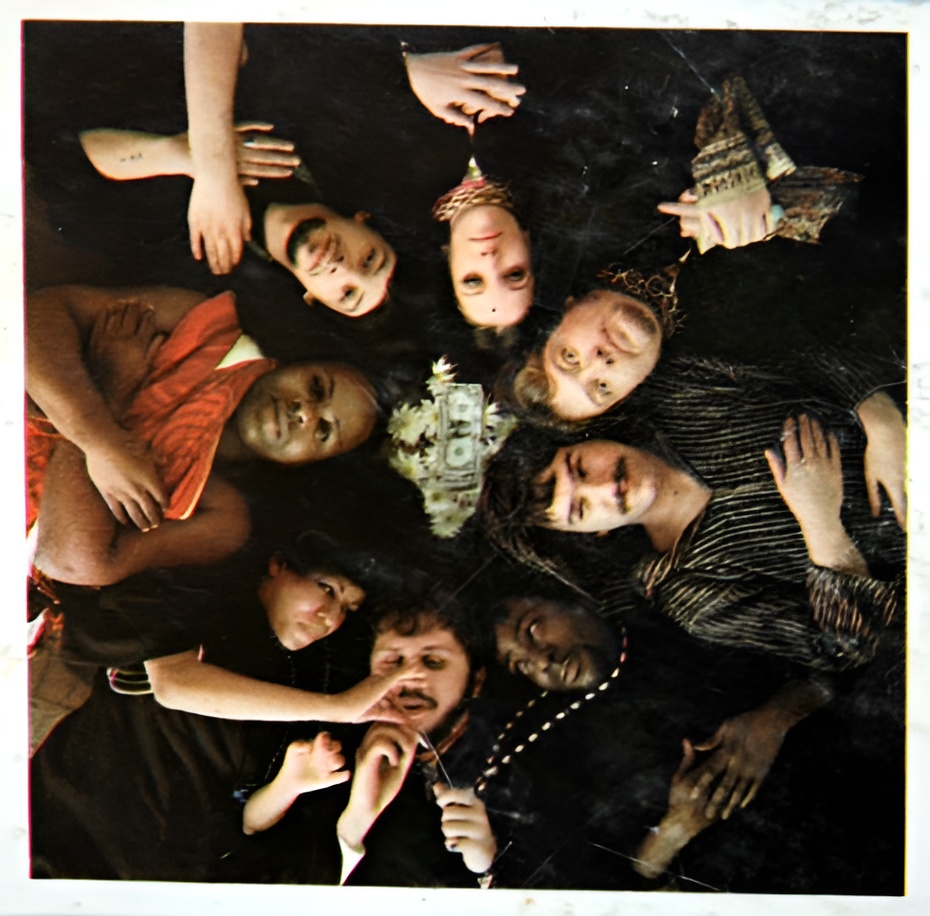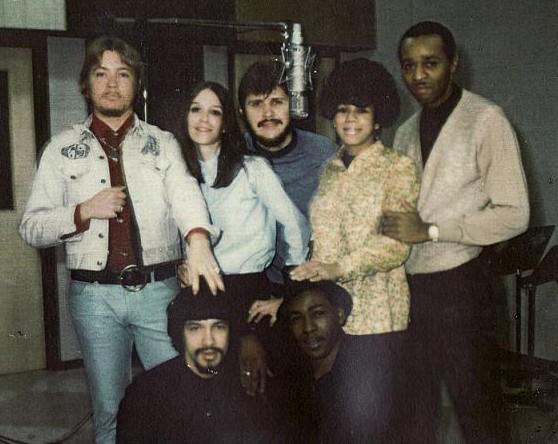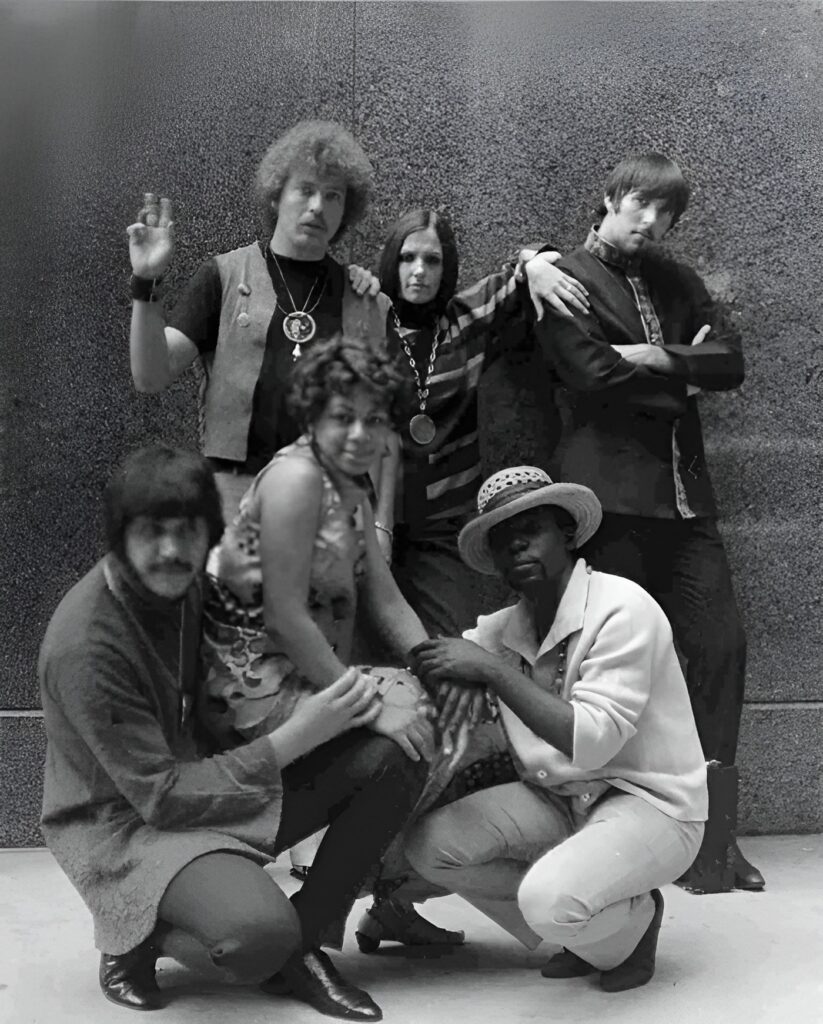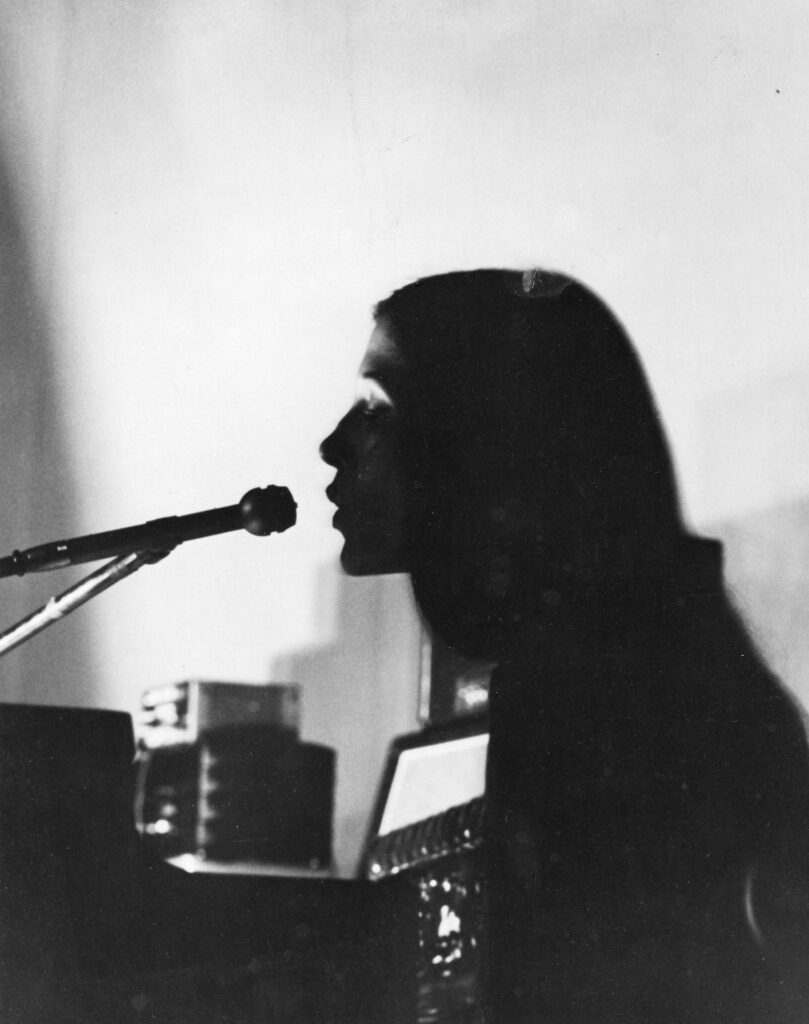
Back of the band's debut LP, Clockwise from bottom centre: Bobby Simms, Minnie Riperton, Charles Stepney, Kenny Venegas, Judy Hauff, Mitch Aliotta, Marshall Chess and Sidney Barnes
Singer Judy Hauff was an original member of Rotary Connection and appeared on the band’s first two LPs, the self-titled Rotary Connection and its follow-up Aladdin. She talks to the Strange Brew about her time with the multiracial rock band best known for featuring singer Minnie Riperton.
Thanks for speaking to us and sharing your memories. Can you tell us about your background and how you got involved with The Rotary Connection?
To begin with, I was not at all involved in rock or pop music in the early Sixties, that is, after I discovered folk music. I had been both a student and a teacher at Chicago’s Old Town School of Folk Music, and part of a performing folk group at The Earl Of Old Town, one of many folk clubs at the time. I spent all my listening hours with Joan Baez, Bob Dylan, Judy Collins, and others helping to promote “the folk scare of the Sixties.”
Sometime after (around September 1967) when I was not closely involved with the school any more, I was surprised to get a call at work from the school’s administrator, Dawn Greening, a dear, warm and wonderful lady, who told me about some recording rock group looking for a girl singer. I said “No, no, no, I was not a rock singer, just a folkie”. She persisted and wouldn’t take no for an answer, assuring me it was a wonderful opportunity, and made me promise I’d go see what it was all about.

I showed up at a building in an unfamiliar part of town. While Marshall Chess, the producer, was not present that day, the other band members were. The “audition” was a somewhat awkward affair, as we didn’t seem to know a single tune in common. They asked me if I knew “The Letter” by The Box Tops, which was number one on the charts right then; I’d never heard of it.
So, we struggled along, until I thought of “CC Rider”, and sang some version of the melody, at which point they decided I could carry a tune and told me to show up on the day set to resume rehearsals. I say “resume” because they’d had a girl singer whose own goals and talents didn’t mesh with the vision for this album, and she left; studio time had already been reserved, so they were in some haste for a replacement.
As you know, Marshall was the family scion in a label that had specialised only in R&B, blues and gospel. But the mid-Sixties was a fairly exciting time in rock music, and Marshall decided he wanted to branch out into white rock. He had a couple of visions for an album, one of which was inspired by The Vanilla Fudge, with their startling, super-trippy, acid-hazed covers of rock standards; and the other was what he described as “a big choir sound.” To that end he sent out a label A&R man to find a local performing group which contained really good singers. Enter Bobby Simms and The Proper Strangers, a group playing at a club out on Chicago’s South side, at that time with the girl singer previously mentioned. (Ed. Guitarist and singer/songwriter Bobby Simms led the band, which also featured bass player/singer Mitch Aliotta and drummer/singer Kenny Venegas.)
Can you tell us about the background to the recording of the band’s eponymous debut LP, which I believe took up a huge number of hours of studio time to complete in the second half of 1967?
On the day appointed, I showed up with everyone else now present. They were discussing “Ruby Tuesday”. They all agreed that they did not like the arrangement that the group had been working on before, and agreed to abandon it. I was kind of sitting back, feeling somewhat uncomfortable and really out of place; I didn’t know any of these people, was not really hip to what was going on in rock music, and so just listened.
Marshall Chess said, “That first part, ‘She would never say where she came from,’ I want to hear something different; not the regular melody, but sort of a changing…” He elaborated a bit, and I finally piped up facetiously, “Well, I can sing Gregorian chant.” Heads swivelled. He said “You can?” I replied: “Uh, yeah.” He then said, “Could you sing Gregorian chant to these words?” “Well, yeah,” I responded. “Do it. Do it!”
This was no challenge for me; as a good Roman Catholic girl, I was pre-Vatican II and had sung Gregorian chant my whole life. Musical director Charles Stepney hit a chord on a keyboard and I started faking a chant to the lyrics. Then jubilation, loud laughing, cheers, clapping. I was stunned. I thought, “What’s going on here? I thought this was supposed to be a rock album??”
Anyway, I couldn’t have left the group then if I wanted to, and I didn’t; it seemed like it was going to be fun. Just to add a little fun of my own, I called an ex-seminarian I knew (there were getting to be lots of them around that time) and asked him to translate something for me into good ecclesiastical Latin, which is what you hear just before the song’s lyrics. A rough translation is something like: “Would you believe the person responsible for this is Jewish? Let’s get back to the beginning and get high.”

You sang lead or co-lead with either Bobby or Mitch on many of the first LP’s tracks. What do you remember about recording the individual tracks?
I can’t be certain about the evolution of the other tunes; Marshall and Charles had made quite a number of basic decisions about the tunes to include, but I also recall seeming to have a fair amount of freedom regarding input of our own. I don’t really remember how this person or that person wound up doing leads.
I should also point out that the “white rock” group soon became multiracial, as the desired “big choir sound” required additional voices to beef it up; as a result Minnie Riperton, Sidney Barnes, and Chuck Barksdale of The Dells appeared on the album. Needless to say, these three first-class singers added a great deal to the sound. The reason they are not featured (as lead singers) on the first album is that the producers were still trying to keep it as a white rock album with just Bobby, Mitch, Kenny, and me, but that album’s production, with strings, horns, and added voices making such a big studio sound, soon made it apparent that performing live would be very problematic trying to reproduce all the sounds heard on the album; consequently Minnie and Sidney became a permanent part of the group, both recording and performing.
A few notes on the album cover. I don’t know if you have an early vinyl album cover, but on the first pressings, there’s a little pile of weed on the back. This was outlawed by the powers that be, and was replaced by the little black and white drawing on the cover of the subsequent pressings.
Also, because we knew that Marshall and Charles were responsible for the whole thing, we insisted they pose with the group for the album photo. The photographer was on a sort of scaffolding above us as we spread our circle on the floor; it was dusty up there and some of it fell, which is why there’s a dot on my forehead. No, it’s not Hindu.

Immediately after the band’s debut LP came out, Kenny Venegas departed – only to return in time to appear on the band’s fourth LP Songs. Tommy Vincent took his place on drums and you started work on Aladdin, which appeared around September 1968. You also started to play live, including a show at the Electric Theater.
The first album was sort of Marshall’s and Charles’s pet fun project; when it was over, the members of course were eager to keep it going, and as I remember, Marshall said they could now submit their own tunes, and appropriate the band name, with, I believe, Marshall’s oversight. After this second album, I left to get married.
As you can see my membership in the group was pretty much a fluke. But it really was fun, and as members, we actually did have quite a lot of artistic freedom and input into how each tune would be arranged; quite unusual, I think, compared with the big labels’ later more formulaic control.
